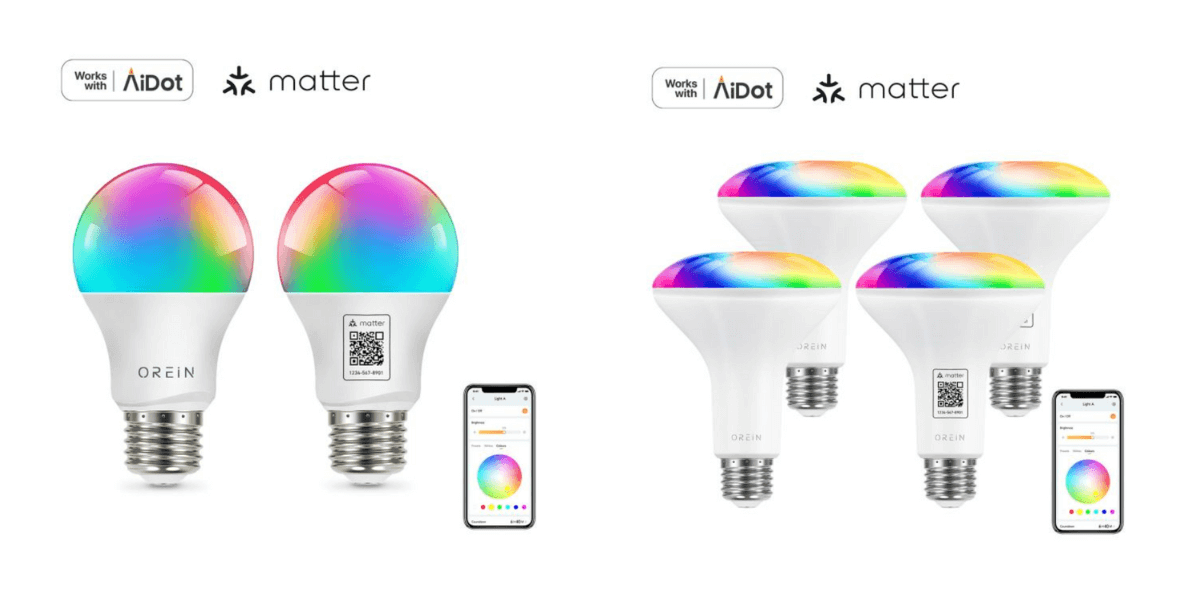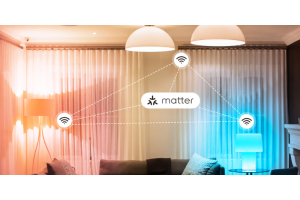
Imagine a world where your smart devices seamlessly work together, allowing you to control your entire home with a single app or voice command. This vision is becoming a reality thanks to the Matter Protocol, a groundbreaking development in the realm of smart homes. In this article, we will delve into the intricacies of the Matter Protocol, exploring its key principles, design philosophy, and the immense importance it holds for the future of the smart home industry.
What is Matter Protocol?
At its core, the Matter Protocol is an open and royalty-free connectivity standard designed to ensure interoperability among various smart devices. Previously known as Project CHIP (Connected Home over IP), Matter Protocol is a collaborative effort between major tech companies including Apple, Google, Amazon, and the Zigbee Alliance. By establishing a common language for smart devices, Matter Protocol enables seamless communication and integration, eliminating the frustrations of compatibility issues that have plagued the smart home market for years.
Key Principles and Design Philosophy of Matter Protocol
The Matter Protocol is built upon several key principles that govern its design philosophy. Firstly, it prioritizes simplicity and ease of use, aiming to create a unified experience for consumers across different brands and devices. With Matter-enabled devices, users can enjoy a hassle-free setup process and intuitive control interfaces, regardless of the specific manufacturer.
Secondly, security is a paramount concern for the Matter Protocol. Robust encryption and authentication measures are implemented to safeguard user data and protect against potential vulnerabilities. This ensures that smart homes remain safe and resilient in the face of evolving cybersecurity threats.
Additionally, the Matter Protocol emphasizes privacy, empowering users with control over their personal data. By granting individuals the ability to determine how their information is collected, used, and shared, Matter Protocol instills confidence and trust in the smart home ecosystem.
Importance of Matter Protocol
Need for a Standardized Protocol: The Why
The smart home market has long suffered from fragmentation, with various manufacturers adopting proprietary protocols that hindered device compatibility. This lack of interoperability has frustrated both consumers and developers, limiting the potential of smart homes. Recognizing this issue, the Matter Protocol emerged as a solution to bridge the gaps between different brands and foster a cohesive ecosystem.
By establishing a standardized protocol, Matter enables smart devices from different manufacturers to seamlessly communicate with one another. This not only simplifies the user experience but also encourages innovation and competition among developers. With a unified platform, manufacturers can focus on creating innovative products, confident that they will seamlessly integrate with existing smart home setups.
Uniting the Fragmented Smart Home Market
One of the primary benefits of the Matter Protocol lies in its ability to unite the fragmented smart home market. Previously, consumers were often restricted to choosing devices from a single brand or ecosystem, limiting their options and flexibility. However, with Matter-enabled devices, users can mix and match products from different manufacturers, creating a personalized smart home experience tailored to their specific needs.
Moreover, the Matter Protocol opens up new possibilities for developers. By embracing this unified standard, they gain access to a broader customer base and can focus their efforts on creating innovative features and functionalities rather than worrying about compatibility issues. This leads to a more vibrant and competitive marketplace, driving the evolution of smart home technology.
Implementation of Matter Protocol
Matter Protocol for Smart Home Manufacturers
Smart home manufacturers have much to gain from adopting the Matter Protocol. By embracing this standardized connectivity standard, manufacturers can ensure that their devices seamlessly integrate with a wide range of products from different brands. This opens up new opportunities for collaboration and innovation, as manufacturers can focus on developing cutting-edge features and functionalities without worrying about compatibility issues.
Implementing the Matter Protocol also streamlines the manufacturing process. With a unified standard, manufacturers can simplify their production lines, reduce costs, and accelerate time-to-market for new devices. This benefits both the manufacturers and the consumers, as it enables a faster pace of innovation and a wider selection of compatible devices in the market.
Matter Protocol for Consumers: The User Perspective
From a user perspective, the Matter Protocol brings unparalleled convenience and flexibility to the smart home ecosystem. With Matter-enabled devices, consumers no longer have to worry about purchasing products from a single brand or ecosystem. They can mix and match devices from different manufacturers, creating a personalized smart home experience that suits their preferences.
Moreover, the Matter Protocol ensures that consumers can easily set up and control their smart devices. Whether it's through a single app or a voice assistant, the intuitive user interfaces provided by Matter-enabled devices make it effortless to manage and monitor the connected devices in their homes. This simplicity and ease of use empower users to fully leverage the potential of their smart homes without the complexities of compatibility issues.
Recommend Product: OREiN Matter Smart Light Bulbs
OREiN presents its Matter Smart Light Bulbs: OREiN Matter BR30 Smart Light Bulbs and OREiN Matter A19 Smart Light Bulbs, a new step forward in smart home technology. These Wi-Fi-enabled bulbs, operating on the revolutionary Matter protocol, offer seamless integration with a variety of smart home systems. With unique features like music sync lights and customizable routines, they are designed to provide a superior user experience.

Highlights:
Stable & Smooth Connection: Enjoy uninterrupted control with our Matter devices. They work flawlessly on your local area network, ensuring seamless operation even without internet connectivity.
Faster & Easy Setup: Set up your smart bulbs within minutes using Alexa App, Google Home App, Apple Home App, SmartThings App, or Aidot App. Scan or enter the QR code to connect, thanks to the universal Matter protocol.
Multi-platform Interoperability: Experience the power of unified control with our smart bulbs. Connect them to any application, control all your devices, and even link to all cloud services. Specialized in Matter protocol for maximal compatibility.
Music Sync Lights: Feel the rhythm with OREiN Matter Wi-Fi light bulbs. They change colors to match your music’s tempo, creating a perfect party atmosphere. Choose among Party, Dynamic, Calm, or Auto Rhythm modes via the Aidot app.
Customized & Routine: Tailor your lighting experience to your preferences. DIY vibrant colors and animated lighting effects, or utilize the ‘My Circadian’ feature to simulate natural sunlight. Enhance mood, improve sleep, and focus with our intelligent lighting solution.
Matter Protocol and Smart Home Devices
1. Device Compatibility with Matter Protocol
One of the most significant advantages of the Matter Protocol is its ability to enhance device compatibility. With the Matter standard in place, smart home devices from different manufacturers can seamlessly communicate and work together. This means that consumers can choose devices based on their preferences and requirements, knowing that they will integrate smoothly into their existing smart home setup.
Whether it's smart lights, thermostats, door locks, or security cameras, Matter-enabled devices ensure interoperability and eliminate the frustrations of dealing with incompatible products. This allows users to enjoy a cohesive and integrated smart home experience, where devices can interact and respond to each other's commands effortlessly.
2. What Matter Protocol Means for Your Existing Smart Home Devices
If you already have a smart home setup with devices that do not support the Matter Protocol, you may be wondering what this means for your current devices. The good news is that the Matter Protocol is designed to be backward-compatible, meaning that existing smart home devices can be updated to support the standard.
Manufacturers are working on firmware updates and compatibility bridges to ensure that older devices can seamlessly integrate into the Matter ecosystem. This means that you won't have to replace your entire smart home setup. Instead, you can gradually update your devices or use compatibility bridges to connect your existing devices to the Matter network.
Conclusion
The Matter Protocol heralds a new era for smart homes, where devices from different manufacturers can communicate and work together seamlessly. By establishing a standardized connectivity standard, the Matter Protocol eliminates the frustrations of compatibility issues and fragmentation in the smart home market.
For smart home manufacturers, implementing the Matter Protocol opens up new opportunities for collaboration, innovation, and cost savings. By focusing on creating innovative features and functionalities, manufacturers can deliver a wider range of devices that integrate seamlessly into consumers' homes.
From a consumer perspective, the Matter Protocol offers unparalleled convenience and flexibility. Users can mix and match devices from different brands, creating a personalized smart home experience that caters to their specific needs. With simplified setup processes and intuitive control interfaces, the Matter Protocol ensures that consumers can fully enjoy the benefits of their smart homes without the complexities of device compatibility.
Frequently Asked Questions (FAQs)
1. How can I make my existing smart home devices Matter-compatible?
Several manufacturers are gearing up to provide firmware updates to make existing devices Matter-compatible. This means your smart lightbulbs, speakers, or thermostats can be tuned in to communicate fluently in the Matter language. It’s like giving your older tech a crash course in a new dialect. But do bear in mind - it depends on your device manufacturer whether they’ll provide these firmware updates and when they’ll roll them out. So, it’s a smart move to check with your device’s manufacturer directly to get the scoop on their Matter plans.
2. How secure is the Matter Protocol?
Quite secure, as a matter of fact! The Matter protocol puts a heavy emphasis on security. Picture it as a Fort Knox for your smart devices. It employs a secure pairing process, ensuring that your devices are safe from the get-go. Furthermore, it also includes end-to-end encryption, providing an extra layer of security to protect your data. This means that even if a crafty cyber thief were to intercept the data, all they’d get would be gibberish. This robust security framework helps protect your smart home from potential cyber threats.
3. What types of devices will support Matter Protocol?
The short answer is a wide array of devices will support the Matter protocol. From smart bulbs to door locks, thermostats to home security systems, and even energy management devices - the list goes on. Think of it as a universal language class attended by a diverse range of smart devices. And the best part? The Matter protocol is designed to accommodate future growth. This means that as the smart home tech evolves, the Matter protocol will too, to support new device types. So, the smart home of your dreams - where every device is interconnected and interoperable - is closer than you think!


















